|
In all-too-typical Auckland conditions that ran through a repertoire of variations from light and shifty to wet and wild, Valsheda II (1295) somehow maintained a close harmony, producing a master-class in yacht-racing to take the National Championships.
However, their dominant performance on paper (with no fewer than 5 bullets) belies the closeness of the fleet racing, in which no single crew seemed to have things their own way. 6 boats achieved podium finishes over the two day regatta, with the order changing at almost every mark. Day one was charaterised by light to moderate winds and some colossal shifts. The trying conditions served to separate the sheep from the goats and the fleet's more agricultural practitioners were mercilessly punished. The race committee worked heroically to keep pace, but after 3 races and a postponement, in which the wind visited all point of the compass, a halt was called. Day two dawned wet and windless, but quickly cleared to near-perfect conditions for four long races. Your correspondent suffered an early end to his campaign with a main halyard breakage before the first start, but witnessed and relished the action from the sidelines. Valsheda II consolidated a commanding lead with three more wins, while Affinity played bridesmaid with three 2nd-places (after a 6th, which they would drop). Bobby's Girl who were in 2nd place overnight, failed to maintain their consistency and Maverick's 1, 2, 3 (and a solid 5) were enough to secure 2nd place from Affinity. Congratulations to all competitors in an awesome regatta and many thanks to the race committee and all of the many volunteers, sponsors and supporters who contributed to the event. Results are here Having waited until race six of a six race series to pick the right side of the race course, your correspondent then picked the wrong winner. At last nights prize-giving, hosted by the Royal New Zealand Yacht Squadron, the Auckland Champs Trophy - replete with the names of some legendary past winners - has handed over to a grateful, but perplexed Willzy and the crew of Feng Shui (1348) .
However sharper minds and keener (younger) eyes soon spotted the missing 'drop' and it is therefore with great pleasure that I can announce that class debutante Lincoln Fraser and the crew of Maverick (1077) are Auckland Champions for 2015. After a nail-bitingly close regatta over two nights, only 2.5 points separate the top four finishers and on average the fleet was separated by just over a minute. Day One delivered lively conditions, congested mark-roundings and a few legislative posers. Bobby's Girl (1058) took two bullets, but posted an 8th place in race 2 (which was won by Valsheda (950)) to finish the day first overall from Maverick (1077) and Valsheda (950). Maverick (1077) continued a consistent regatta on Day Two until the final, single-lap race, when competing breezes inevitably wrought a massive hole, into which the majority of the fleet haplessly drifted. Valsheda (950) and Feng Shui (1348) both found pressure on the left hand side of the work and at the top mark Valsheda (950) rounded first. Feng Shui (1348) launched their chute before the offset mark and rolled Tortuga (779) to take 2nd place. With Maverick (1077) finishing a distant 8th, the top three boats were then only separated by 1.5 points and with a discard Maverick's rock-steady performance won out. Many congratulations, then, to Lincoln Fraser Simon Baker, Georgi Yankov and Sam Melville and thanks to all who competed in a hugely enjoyable regatta. Many thanks also to Megan Kensington and the RNZYS race committee and to Melanie Best and the race management team. Provisional results are here. Flight 4 welcomed Hugh Rebbeck as the new owner of Echelon (1083). Hugh and his crew, Jono Howson have served their most recent Etchells apprenticeships aboard Tortuga (779) and their results eloquently attest to their faithful attendance to the tutelage of your correspondent. Fleet veteran, Gavin Gerrard was on hand last night to correct the worst of the damage that I have inflicted and we wish Gavin all the very best for the future.
With the line set excitingly close to the Westhaven breakwater, a fleet of 11 enjoyed three quick and grippingly close races with Valsheda (950) taking a clean sweep. Bobby's Girl (1058) (minus Johhny Melville) took second and Maverick (1077) just eased out Upfront (814) for third place. After racing, Jenny Cooper of the Royal Hong Kong Yacht Club gave a brief, impromptu presentation at Swashbucklers to invite all Etchells sailors to the 2015 Worlds, to be held in Hong Kong in November. Information regarding this event can be found on the RHKYC website, or by emailing Jenny ([email protected]). The Worlds in Hong Kong is a truly mouth-watering prospect and all New Zealand sailors are encouraged to participate. Further information regarding the Worlds will be posted on the website over the next few months. Next week, the Auckland Champs, hosted by the RNZYS, will be held on successive evenings (Monday 23rd and Tuesday 24th). A dozen Etchells are expected to compete and all are invited to attend the prize-giving at RNZYS on Tuesday after racing. Results are here (flight) and here (series). First of all, congratulations to all the New Zealand crews who took part in the Etchells Worlds in New York. What follows are some reflections on sail trim and performance, courtesy of the One Design team at North Sails BILL HARDESTYWhat a wonderful adventure! It has been great to have the support of my family and friends, the support of my new teammates Taylor Canfield, Stephanie Roble, and Marcus Eagan. Our approach was similar to years past: sail as many big fleet regattas as possible, look at all new sail possibilities, research the hell out of the Worlds venue, and try to have fun regardless of how the racing is going. It doesn't come without some stress. We felt we were defending the World Championship title since we hadn't raced an Etchells Worlds since our successful bid in 2011. WHAT WE LEARNED Flat sails go faster in the flat water of Miami, where we struggled with our San Diego open water setup. It took us a long time to get the tuning right for flat water. Moving the mast butt aft and a longer headstay seemed to be an improvement, but it still wasn't easy. The fleet had progressed yet we were at the same level where we had stepped out in 2011. We had to work harder. I decided to get the boat back to San Diego where I could do the long overdue maintenance and we could do some sail testing. North Sails and our tuning partners had been working on a few things and we wanted to give them a try. When our sailing finished in San Diego we concluded that the details are important but it is the big lines that make the biggest difference. I got better at driving but the crew made my life easier by keeping the boat going fast. Inhauling the jib sheet was a big discussion. We tried various inhauling techniques in different conditions and sometimes we went faster but mostly we went the same. It was hard to consistently measure the amount of inhaul so we eventually put it out of our minds. We had a jib with a longer and stiffer bottom batten option. This way we could inhaul without closing the bottom of the jib. For better or worse, we never felt fast with the stiff bottom batten except when at the upper end of the wind range. Then there was the jib's top batten. We started with three choices! Wow, too many choices. We simplified! Short batten for light air and medium wind with bumpy water and the stiff top full length batten was very fast in flat water or higher wind speeds. What really makes a difference is not what batten you select, how much rig tension you use, or even how much rake you have; it comes down to identifying when you are fast and repeating those settings. TWO DRILLS WE USED TO IMPROVE OUR RACING Acceleration Drill - Ease the sails and slow the boat like in a pre-start, put the bow down, let the boat accelerate, pull the sheets to the marks, and hike. Everything needs to be pre-set, backstay, traveller, etc. You get one chance to hit the rail and be ready for full speed. This drill will help improve starting, exiting the leeward mark, and anytime the boats get close. Hiking Drill - Clearly define what lines will be used for hiking. I know it sucks but it's a reality. Now see how long you can hold 100% hiking posture. We found the front two positions, using both hands to hike, could hold for two minutes or more. The helm and middle could only hike for about two minutes maximum. Anytime we needed a little extra speed we would take turns counting to 15. After two cycles through the crew (two minutes) we were always in a better position. SPINNAKER CHOICE Spinnaker choice was easy. But it took us a long time to figure it out. The VMG (smaller) spinnaker is almost always better. The only time we would use the FR runner spinnaker was if the wind was strong and the waves were flat. Always lean towards the VMG and make sure if the runner is plugged in that it is clearly a runner condition. Break your sails in! We used the main for 12-15 days before the Worlds. John Bertrand also had a well broken in main, but most others I saw had brand new sails. Use the jibs a few days, but not too much. Also, avoid using new sails in heavy wind or anytime they will be flogging. Look for North Sails to have a very fast new radial jib and main hitting the market soon. We did some testing with a radial jib and had great success. It was just too close to the regatta to make a change that wasn't 100% proven and regatta tested. The Etchells class is stronger than I have ever seen. I want to close by saying thank you to everyone who competed in the World Championship. These events would be nothing without the great sailors involved and the serious campaigns they represent. Until next time, Bill Hardesty - USA 979 CHRIS LARSONThere were 2 distinctive trimming styles we used with success in Newport. They were determined primarily by the sea state. SMOOTH WATER TRIM Our "Smooth water trim" focused on having a slightly tighter mainsail leech through mainsheet and sometimes a touch of extra backstay to remove depth. This allowed the boat to be fully loaded, but however it did give a narrower groove. The traveler car was always ¼ - ¾ of the distance up from centerline. Even though we wanted a flatter profile, it was important to not over trim the jib. We never trimmed the jib to where there was a crease in the foot of the jib. Using the spreader marks allowed us to consistently trim for the look we wanted. I call this more of a Biscayne Bay set-up. ROUGH WATER TRIM The "Rough water trim" focused on depth in the bottom of the mainsail, but utilized more twist through mainsheet with sometimes slightly less backstay. The upper leech section of the mainsail was more open giving the boat a much larger groove to steer to. Again, the traveler car was always ¼ - ¾ of the distance up from centerline. Working on the more forgiving, powerful mode, we would move the leads slightly forward and ease the jib a touch while still trying to achieve the same leech tension/profile as the smooth water setup. This really worked well for us especially when the seaway became noticeably turbulent for the given wind strength. We used similar mast tune for both Smooth & Rough water. We set up with sag up until 12-13kts. (under 8kts - ¾", 9-12kts – ¼", over 13kts - straight). Our rake was between 47 5/8" and 48 ¼" for the entire event. A good rule of thumb for rig tension is to gauge the tension on the leeward vertical shrouds. I tried to set them up by just releasing w/ tension in the conditions we saw in Newport. It's interesting to note there was a lot of talk about inhauling the jib before the event and I can say for sure we did not inhaul at all. Inhauling (non-North jibs) seems to work for a very short period where you need height, but over a long run the amount of height gained is far outweighed by the loss forward. Reflecting back, I would have to say that we had one of the most open mainsail leeches throughout the range of conditions we saw in Newport. Trimming less seemed to give more! We always felt confident that we were going well and trimming was a large key to our success. Good luck! Chris Larson - HKG 1333 VINCE BRUNTraining for the Worlds after the Jaguar Series in Miami, was in my opinion, the best time for us and the teams to come up with ideas, not only on how to improve our sails but also learn rig setups under different wind and sea conditions. Many of the incremental improvements to our sails came from this pre-Worlds sail testing. MAINSAIL We have been working on our main's broad seaming and luff curve for some time now, particularly the standard PC-F main, and I am glad to report that we have greatly improved its smoothness but even more importantly, its performance. JIBS With the Worlds being held in a place that we could see a huge range of winds throughout the race, and I felt that it was extremely important to increase the working range of our jib models. To get this done, we worked on batten length and specs for both the top and lower jib battens. During our many sail tests in San Diego, we learned that the difference in camber at the top of the jib changed by about 2% ( from 16% to 18% ) when using the long full length batten versus the short partial length one at the top, the result having a big impact on the power generated by the sail. Now, to increase the range of our jibs,the new standard full length top batten is a bit stiffer than before and we now are also including a softer full length version for light winds. We also tested straightening the lower jib leech, which proved fast at the top range of the jib. To make this possible, we made the lower batten removable, being able to not only change the stiffness but also the length, with the upper range batten being stiffer and max class legal length. This made the lower leech more open decreasing the drag, and greatly improving the jib performance at the top end of the wind range. This straighter lower leech also proven fast when inhaul was used. Our experience was that the inhaul was only efficient only on flat water conditions and winds between 8 to 12 kts TWS, which explain why a few teams successfully used this system during the Jaguar series and at other flat water events. SPINNAKERS Since the VMG is only used in relatively light winds, Bill Hardesty asked us to make a lighter clew so that the sail flew easier. We made his sail with a 30% lighter clew patch and it was clear that this not only made the sail easier to fly but also greatly helped the light winds performance. Look for this to be incorporated in our new 2015 model VMG spinnaker. ONGOING RESEARCH & DEVELOPMENT At our loft in San Diego, we have been working on a medium wind range "radial" jib and it appears that we are very close to having the product ready. To make sure we have all the details sorted and tuning figured out, I plan to sail with one of these jibs on local events and get the shape and finishing details completed. Our North Sails colleagues over in Australia are also working on a similar sail, and hopefully by year end we should have this development completed. This new jib will feature a new cloth developed by North Sails called "Radian", which was designed specifically for radial constructed sails. There is also a main that is being developed by NS Australia (with the cooperation of 2012 Etchells World Champion Tom King), and they are also close with the last few tweaks being done and the product performing extremely well. Why am I bringing up sails that are still in the development stages, when we have sails that just dominated the 2014 Worlds? So that you are well informed on what our future goals are for the Etchells and what steps we are taking to get there. We believe that radial sails produced with NS proprietary "Radian" fabric will create longer lasting sails, which is especially important to a class that has sail purchase limitation. Below are trimmer eye view of the latest test sails. I wish you and your team a very successful sailing season. If I or any member of our Etchells team can help with information on our sail models selection or how to make your boat go faster do not hesitate to contact us.
Best Regards, Vince Brun Some great shots of Day 2, courtesy of Richard Gladwell and Sail World (www.sail-world.com) copyright Richard Gladwell
A cracking weekend of fine weather and close, competitive racing closed the curtain on a great summer of sailing. On day 1 the first four races had four different winners, including Lindsay Kennedy's Quantum (1314) - making a welcome return to the fleet after a long absence - class stalwart Phil Pryde's Split Decision (914) - who also took a bullet in Race 8 - and master helmsman Gavin Gerrard.
On the whole the racing was tight and closely fought, with seconds separating first and last on the 1-mile course. Nonetheless, Feng Shui (1348) soon established an insurmountable lead, fully 15 points clear of 2nd place after 8 races. Congratulations to Andrew Wills, Anatole Masfen and Matt Kelway on an immaculately raced series. Congratulations too to all competitors in this truly Corinthian competition. Many congratulations also to rookie Hayden Whitburn and Upfront (814). Hayden's place on the podium is all the the more remarkable for his having missed two races due to rig failure. Special thanks go to Megan Kensington and the RNZYS race committee who ran an exemplary series in sometimes trying conditions. Particular thanks also to the Kensingtons and Craig Greenwood for the generous contribution of tow boats. Finally, thanks to North Sails for furnishing the prizes and to North Sails and Coast New Zealand (I declare an interest) for sponsoring drinks after both days' racing. Results here The 2014 Etchell Auckland Championships were held over Monday and Tuesday nights attracting a fleet of ten boats.
Six races were sailed in total, with gusty winds ranging from 10 - 18 knots. Racing was very tight, with four different race winners. The Overall Winners were 1st - Andrew Wills, Anatole Masfen and Matt Kelway 2nd - Alastair Gair, Derek Scott, Rhys Johnson and Andrew Clarke. 3rd- Hayden Whitburn, Rob Salthouse (Monday), Paul Murray (Tuesday), Henry Haslett and Guy Wilson 4th -John Melville, Stu Malloy and Cam Horne Many thanks go to Warwick and Theresa Gair, who did a fantastic Job running the racing. We race every Tuesday night during the Summer and welcome new sailors - please join the crew / mailing list or contact us to get involved All images by kind premission of Johnny Montgomery A slightly misleading title to this post, since Flight 1 has not yet taken place despite the season being two weeks old.
However, I hope that your Tuesday mornings, like mine, are once again filled with anticipation and laced with more than a hint of adrenalin. Next week looks promising and, in the meantime, I advise you to look over your bateau and take stock because I cannot promise that it will be light. Please also take a moment to consider the forthcoming Etchells Invitational - on the subject of which I will be circulating a special email later this week. The purpose of the Invitational is to introduce new blood - and some fresh enthusiasm - into our class. There are still too many boats standing idle on the hard when there is (as we all know) genuine excitement and exhilaration to be found just beyond the breakwater. From an outsider's perspective it can be hard to reconcile the reality of fast, fun, competitive sailing with the common perception of the Etchells Class as some kind of floating Rotary Club - an impression that I am determined to rehabilitate. Whilst it is pleasant to see your familiar faces across a packed Swashies of a Tuesday evening, think how much you would enjoy the sight and thrill of a packed starting line, new rivalries and fresh competition. The Invitational will not form part of the regular season, but will include awesome prizes and a Duckworth-Lewisesque system to reward the boat with most (genuine) newbies. I for one have invited a promising young chap just in from San Francisco whose recent experience seems to have been in cats (of all things!), so it will be interesting to see how he copes with sailing at this rarefied level. Your correspondent is just now emerging from behind the sofa from where he has been watching the America's Cup racing from between white knuckles. If that kind of balls-out action isn't enough to whet your appetite for some yacht racing, then you're a landlubber with nary a drop of brine in your blood - or possibly dead from shock after Saturday's stroke-inducing near-miss.
The good news is that this weekend's Spring Regatta is shaping up nicely with 5 entries confirmed to bid for the Warwick Gair Cup. The Spring Regatta affords all owners and crews the perfect opportunity to look over the boat, dredge out the sandwiches they left in the locker after the Nationals, recall the list of 'to dos' not yet done and get back in the groove before the Summer Series kicks off in earnest in just 3 short weeks. A 1300 start will allow time to watch the kids sport and shake down the boat, so get on the blower sharpish and rustle up your crew. I'll be posting all entries and some updates over the course of the next few days - contact me with any feedback or questions. DON'T HAVE A BOAT? SHORT ON CREW? VISIT THE WEBSITE FOR BOTH. We're back!
With only a couple of weeks until spring, it is time to dust off the oilies and get ready for a new a season of close, exciting racing. SEE THE WHOLE PROGRAMME HERE An ice-breaking Spring regatta has been mooted for the weekend of 21-22 September. This year, the Tuesday Night Series will be become two series (pre- and post-Christmas) with the following enhancements:
The two-series formula should sere to keep things closer and more interesting throughout a long season. If you have questions, comments or suggestions please contact me as soon as possible. |
AuthorAlex Webster is Auckland Fleet Captain and runs this website, so blame him. Archives
February 2019
Categories
All
|






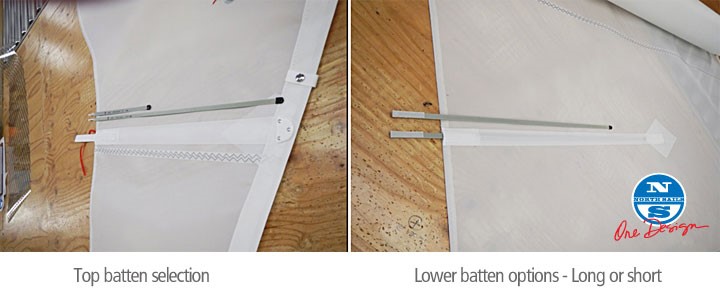






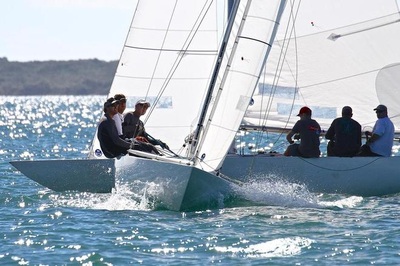















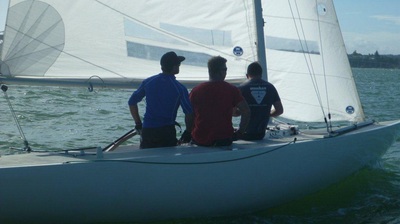



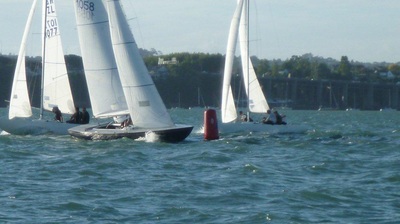








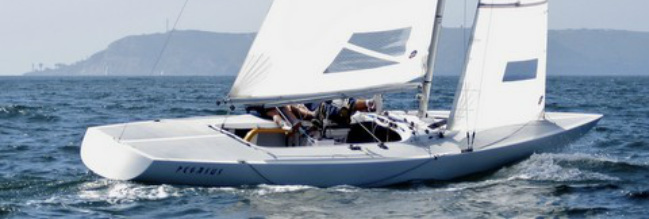
 RSS Feed
RSS Feed
